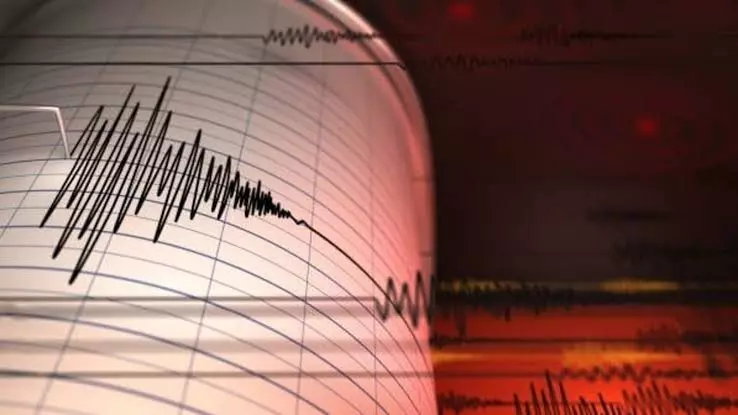Moderate tremors felt in Warangal; speculations rife about mining activity
According to the National Center for Seismology (NCS), the earthquake had a magnitude of 3.6 on the Richter scale and occurred at a depth of 30 kilometers
By Anoushka Caroline Williams
Representational image
Hyderabad: An earthquake measuring 3.6 on the Richter scale jolted Warangal on Friday.
According to the National Center for Seismology (NCS), the earthquake had a magnitude of 3.6 on the Richter scale and occurred at a depth of 30 kilometers.
This incident came on the heels of a minor temblor in the Manuguru Mandal on August 19.
The earthquake details
The earthquake, which struck at 4:43 a.m., was located 127 kilometers east of Warangal. Its epicenter had a latitude of 18.04 and a longitude of 80.80. The tremors sent ripples of concern through the affected areas and left residents wondering about the causes and implications of these events.
Local Accounts
Residents who experienced both earthquakes shared their accounts with NewsMeter. Many reported that along with the ground tremors, they heard unusual noises, likely caused by household items shifting and structures vibrating. The effects of the earthquakes were felt in Manuguru, Pujarinagar, Rajpet, Kothakondapuram, Sundarayyanagar, and Adarshnagar.
Questions and concerns
One of the key questions raised by these earthquakes is whether they are natural occurrences or if human activities are contributing to them. Interestingly, blasting activities in the local Singareni coal mines typically take place between three o'clock in the afternoon and 3.30 in the evening. However, the recent tremors occurred after 4 p.m., which prompted residents to leave their homes for safety.
This timing discrepancy has led some to speculate whether mining operations might be linked to these seismic events. While it's important not to jump to conclusions without a thorough investigation, it does raise valid concerns about the potential impact of industrial activities on the region's geological stability.
How to stay safe during an earthquake
Staying safe during an earthquake is crucial, as these natural disasters can strike with little warning.
Here are some important steps to follow:
Drop, Cover, and Hold On: As soon as you feel shaking, drop down to the ground to prevent being knocked over. Take cover under a sturdy piece of furniture like a table or desk to protect yourself from falling objects. Hold on to your shelter until the shaking stops.
Stay Indoors: If you are inside a building, stay there. Do not run outside during the shaking as falling debris poses a significant danger. Find a safe spot, drop, cover, and hold on.
Stay Away from Windows: Glass can shatter during an earthquake, so move away from windows and glass doors to avoid being injured.
If You're Outside: If you are outdoors, move to an open area away from buildings, trees, streetlights, and utility wires. These can collapse during an earthquake. Protect your head and neck.
If You're in a Vehicle: Pull over to a safe location, away from overpasses, bridges, and buildings. Remain inside the vehicle with your seatbelt fastened until the shaking stops. Avoid stopping under trees, streetlights, or signs.
If You're in Bed: Stay there and protect your head with a pillow. Do not attempt to run during the shaking.
After the Shaking Stops: Be prepared for aftershocks, which are smaller earthquakes that can follow the main event. Check yourself and others for injuries and administer first aid if necessary.
Check for Hazards: Be cautious of hazards like gas leaks, fires, and damaged electrical wires. If you smell gas or suspect a leak, turn off the gas supply if it's safe to do so and leave the building.
Use Your Phone Sparingly: Use your phone for emergency calls only, as phone lines can become overwhelmed during a disaster. Text messages may work when voice calls cannot.
Have an Emergency Kit: Prepare an emergency kit with essential supplies like water, non-perishable food, a flashlight, batteries, a first-aid kit, and important documents. Keep this kit easily accessible.
Secure Your Home: Before an earthquake, secure heavy objects and furniture to prevent them from falling. Consider installing earthquake straps for water heaters and gas appliances.
Practice Drills: Conduct earthquake drills with your family or household members so everyone knows what to do in case of an earthquake.
Remember that earthquake safety is about being prepared and knowing how to react quickly and appropriately when the ground begins to shake. Stay informed, have a plan, and prioritize your safety and the safety of those around you.
Conclusion
The earthquakes in Warangal have underscored the unpredictability of nature and the need for vigilance in understanding and mitigating the risks associated with seismic activity. While the NCS continues to gather data and analyze the situation, local authorities, experts, and residents must work together to ensure the safety and well-being of the community.
Whether these earthquakes are purely natural or influenced by human activities, they serve as a reminder of the importance of earthquake preparedness and the necessity of rigorous monitoring and research to better understand the seismic dynamics of the region.